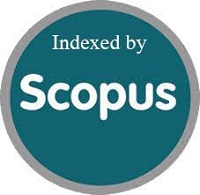Norming of Coloured Progressive Matrices Test in Elementary School Children Based on Classical Measurement Theory and Rasch Modeling
DOI:
https://doi.org/10.15408/jp3i.v10i2.18155Keywords:
CPM, intelligence, norming, elementary school, Indonesian contextAbstract
This study aimed to develop Coloured Progressive Matrices (CPM) norms for the use in the Indonesian context. We used two approaches, namely classical test theory (CTT) which uses raw score (total score) as measurement result information and Rasch modeling which uses logit value as measurement result information. This research was conducted in four regencies and one municipality in the Province of Yogyakarta. The participants were 1,779 elementary school age children recruited through random sampling. The norming analysis in this study divided the data into five age groups in the range of 6 – 12.5 years old. The level of intelligence represented by the results of the CPM measurement consists of five levels, from Grade I to Grade V. Grade V as the lowest intelligence level has a value below the 5th Percentile of the data distribution. Grade IV as the second lowest level of intelligence was located between between the 5th and 25th Percentile of the data distribution. Grade III representing the average level of intelligence had the greatest range from 25th to 75th Percentile. In addition, the range allocated for Grade II was similar to Grade IV, but in the opposite direction of the distribution (i.e., between 75th and 95th Percentile). Lastly, Grade I as a representation of the highest level of intelligence is in the range of values above the 95th Percentile.References
Aaron, E; Coups, J.E, Aron, E.N. (2013). Statistic for psychology, 6th edition. New Jersey: Pearson Education Inc.
Azwar, S. (1996). Penyusunan skala psikologi. Yogyakarta: Pustaka Pelajar.
Azwar, S. (2002). Tes inteligensi: sebuah pengantar. Yogyakarta: Pustaka Pelajar
Azwar, S. (2010). Reliabilitas dan validitas. Yogyakarta: Pustaka Pelajar
Domino, G & Domino, M.L. (2006). Psychological testing: an introduction. Cambridge: Cambridge University Press.
Kazem, A.M. dkk. (2009). A normative study of the coloured progressive matrices test for Omani Children age 5 – 11 years. Jurnal Penddikan Malaysia. 34 (1).
Purwono. U. (2014). Validitas pengukuran. Yogyakarta: Materi Workshop Pengukuran Psikologi, diadakan oleh Prodi Psikologi UII.
Raven, J. (2000). The Raven’s progressive matrices: change and stability over culture and time. Cognitive Psychology, 41, page: 1-48.
Smits, C.H.M; Smit, J.H; Heuvel, N & Jonker, C. (1997). Norms for abbreviated raven’s coloured progressive matrices in an older sample. Journal of Clinical Psychology, Vol: 53 (7), page: 687-697.
Sumintono, B & Widhiarso, W. (2013). Aplikasi model Rasch untuk penelitian ilmu-ilmu sosial. Jakarta: Tim Komunikata Publishing House.
Urbina, S. (2004). Essential of psychological testing. New Jersey: John Wiley & Sons, Inc.



